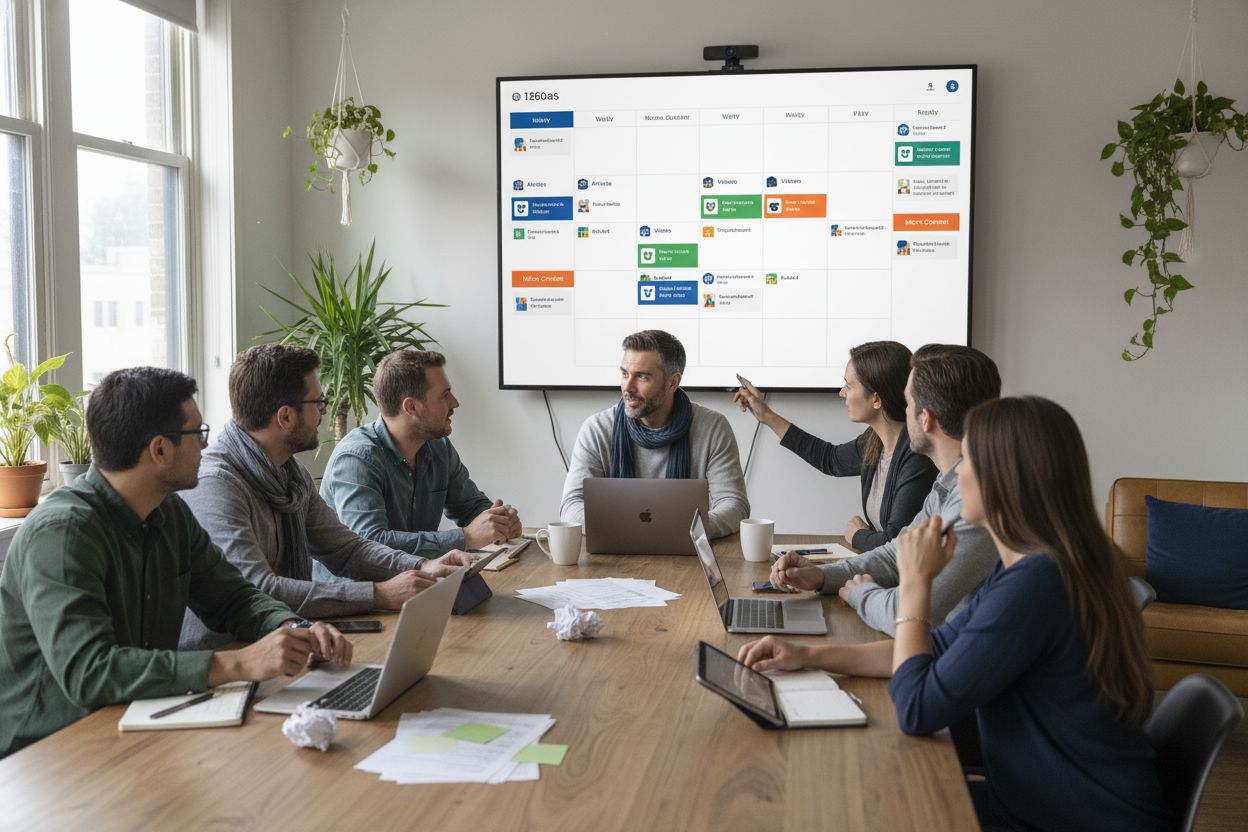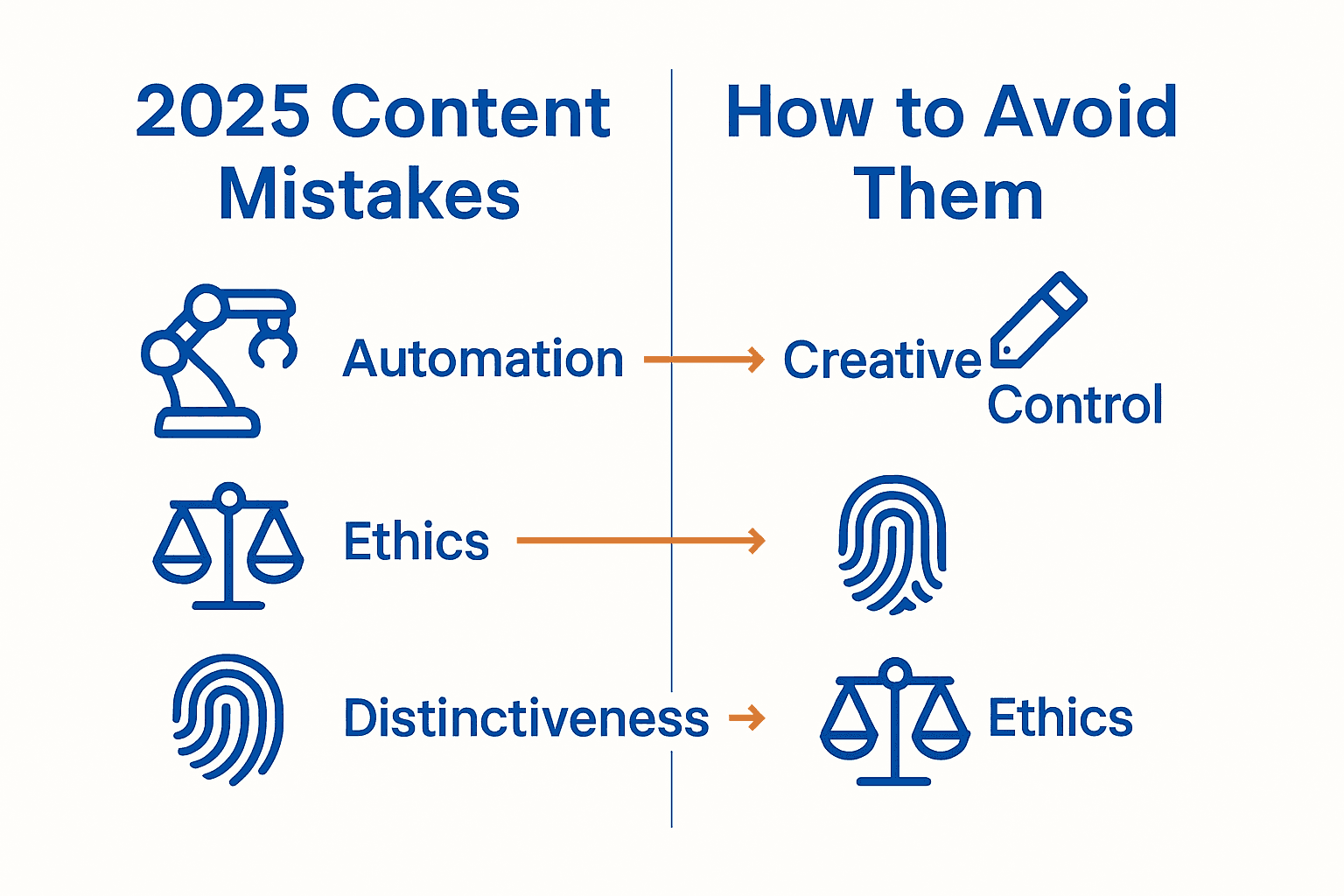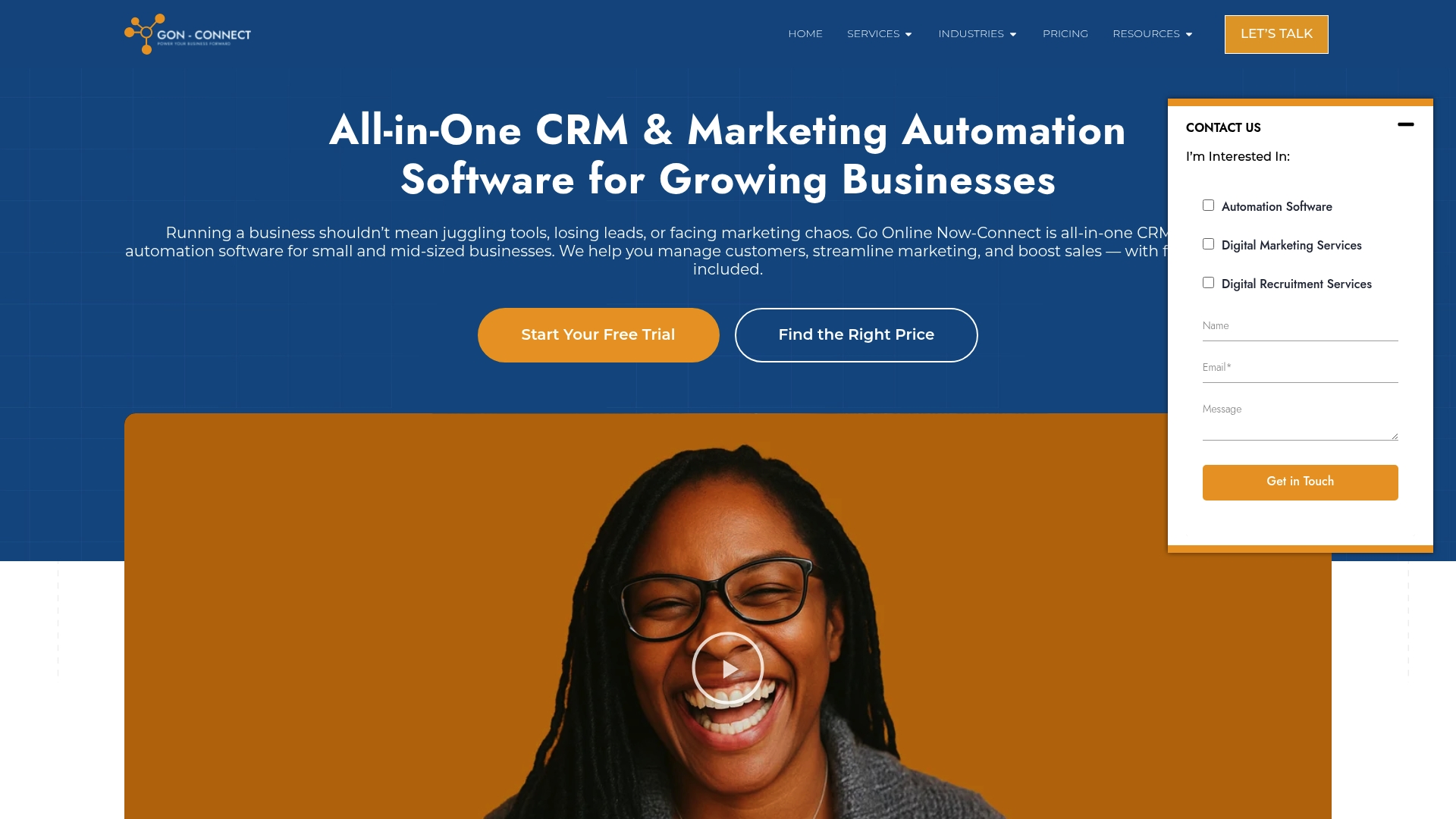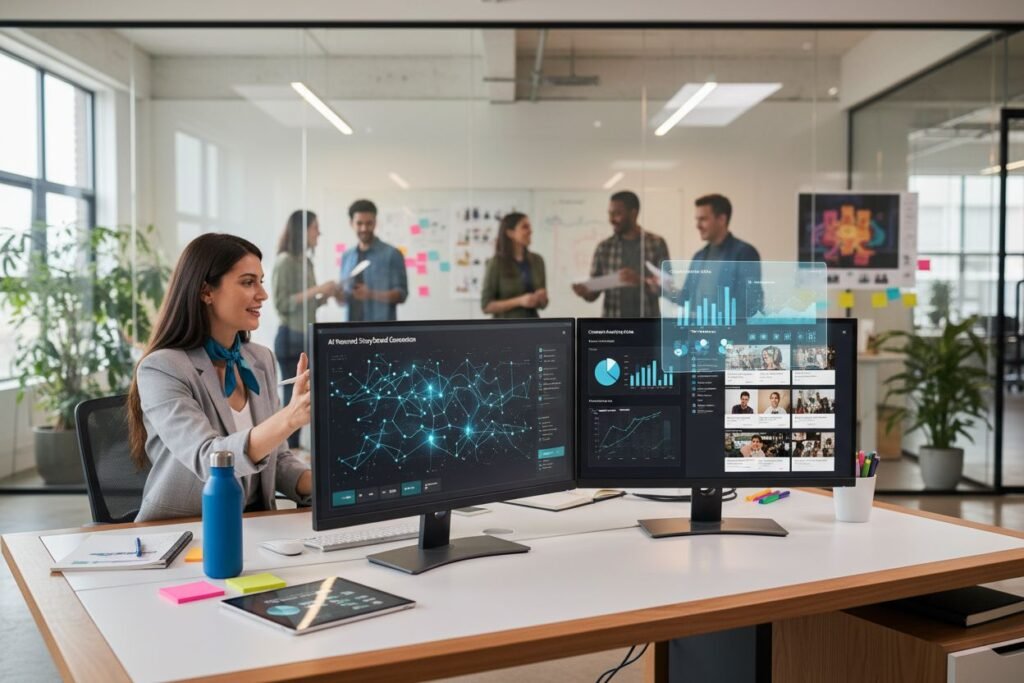Nearly nine out of ten content professionals now use artificial intelligence to shape their creative work. This shift affects more than just how quickly content is produced. It redefines what it means to be a creator, blending human vision with machine intelligence in ways never seen before. As new tools and strategies take hold, understanding how to merge technology with authentic storytelling will shape who stands out in 2025.
Defining the 2025 Content Creation Process
The content creation landscape is undergoing a profound transformation, driven by the rapid evolution of generative AI and advanced language models. Content creators are no longer just writers or designers but strategic orchestrators of multimodal storytelling, leveraging technologies that enable unprecedented efficiency and creativity.
According to research from recent academic reviews, generative AI has fundamentally reshaped creative industries by introducing capabilities that extend far beyond traditional content production. These technologies now enable seamless creation across multiple formats – text, images, and videos – dramatically accelerating workflow processes and democratizing creative tools. The key shift is not replacement, but augmentation: AI serves as a powerful collaborative partner that amplifies human creative potential.
The emerging author-AI co-creation model represents a nuanced approach to content generation. Cutting-edge research reveals that content professionals are strategically delegating drafting tasks to generative AI while maintaining critical creative control. This approach allows creators to:
- Rapidly prototype content concepts
- Generate initial drafts with AI assistance
- Refine and personalize machine-generated drafts
- Preserve unique creative voice and strategic intent
By 2025, successful content creation will be defined not by technological capabilities alone, but by how intelligently creators integrate AI tools to enhance, not replace, human creativity. The most effective content strategies will emerge from those who view AI as a collaborative intelligence – a powerful assistant that amplifies human potential rather than a standalone solution.
Emerging Trends and Essential Formats
The content creation landscape is rapidly evolving, with digital formats transforming how businesses communicate and engage audiences. Commercial analysis reports highlight a dramatic shift toward more dynamic, interactive, and personalized content experiences that go far beyond traditional marketing approaches.
Professional marketing sources reveal several critical trends emerging in 2025 that will reshape content strategy. The most significant developments include:
- AI-Driven Content Creation: Ubiquitous artificial intelligence enabling large-scale, sophisticated content generation
- Immersive Video Experiences: Augmented and virtual reality technologies creating interactive visual storytelling
- Micro-Content Revolution: Short-form video and bite-sized content dominating user engagement
- Live-Stream Interactions: Real-time video platforms providing immediate, authentic connections
- Personalization Technologies: Voice search and live commerce transforming user experience
The future of content isn’t just about creating material—it’s about crafting intelligent, responsive experiences that adapt to individual user preferences.
 By embracing these emerging formats, businesses can create more engaging, meaningful connections that transcend traditional communication boundaries. Successful content strategies in 2025 will seamlessly blend technological innovation with genuine human storytelling, ensuring that each piece of content feels both cutting-edge and deeply personal.
By embracing these emerging formats, businesses can create more engaging, meaningful connections that transcend traditional communication boundaries. Successful content strategies in 2025 will seamlessly blend technological innovation with genuine human storytelling, ensuring that each piece of content feels both cutting-edge and deeply personal.
Here’s a comparison of 2025’s leading content formats and their key characteristics:
| Format | Defining Feature | Primary Benefit |
|---|---|---|
| AI-Driven Content | Automated, scalable creation | Consistency Efficiency |
| Immersive Video | AR/VR storytelling | Engagement Interactivity |
| Micro-Content | Short-form Bite-sized |
High user retention |
| Live-Stream Interaction | Real-time audience connection | Authenticity Immediacy |
| Personalization Tech | Voice/live commerce enabled | Customized user experience |
Workflow Automation and Collaborative Tools
Content workflow automation is undergoing a revolutionary transformation, driven by advanced artificial intelligence and collaborative technologies that are redefining how teams create, manage, and distribute content. A professional report on the 2025 workflow automation market highlights the critical shift towards AI-assistants and multi-agent workflows that dramatically enhance organizational productivity.
Industry publications outline several groundbreaking trends that are reshaping collaborative content tools. These emerging technologies are characterized by:
- Hyperautomation: Integrating robotic process automation (RPA), artificial intelligence, and advanced analytics
- Low-Code/No-Code Platforms: Democratizing tool creation for non-technical team members
- AI-Driven Decision Intelligence: Enabling more sophisticated, data-informed content strategies
- Security-Centric Automated Processes: Ensuring robust protection throughout content workflows
The future of content creation lies in intelligent, interconnected systems that seamlessly bridge human creativity with technological efficiency. By embracing these advanced collaborative tools, organizations can break down traditional silos, accelerate content production, and create more responsive, adaptive workflows that respond dynamically to changing market demands.
Learn more about streamlining your content processes, where technology becomes a true multiplier of human potential.
Strategic Planning and Audience Alignment
In 2025, content strategy transcends traditional marketing approaches, becoming a sophisticated dance of data-driven personalization and intelligent audience targeting. Commercial insights reveal a transformative landscape where first-party data and predictive analytics are the cornerstone of creating truly resonant content experiences.
Advanced marketing analysis highlights how artificial intelligence enables unprecedented levels of hyper-targeted personalization. The key strategic elements emerging in 2025 include:
- Dynamic Real-Time Content: Adapting narratives and visuals instantaneously
- Localized Campaign Strategies: Tailoring messaging to specific cultural and regional contexts
- Predictive Behavior Analysis: Anticipating audience needs before they arise
- Comprehensive Gap Analysis: Identifying and addressing content consumption patterns
Successful content creators will view their audience not as passive consumers, but as active participants in a collaborative storytelling ecosystem. By leveraging these advanced personalization techniques, brands can create more targeted and engaging content strategies that feel intimately connected to individual user experiences. The future of content is not about broadcasting messages, but about creating adaptive, intelligent conversations that evolve in real-time with audience expectations and preferences.
Common Pitfalls and Avoidable Mistakes
Navigating the complex landscape of content creation in 2025 requires more than technological proficiency—it demands strategic wisdom and nuanced understanding. An academic study reveals a critical insight: excessive delegation to AI can precipitate a dangerous erosion of creative agency, leading to outputs that feel generic and mechanically produced.
Professional guidance warns creators about several fundamental pitfalls in the emerging content ecosystem. The most significant mistakes to avoid include:
- Over-Automation: Losing human touch and authentic storytelling
- Creative Surrender: Allowing AI to completely dictate content direction
- Ethical Blindspots: Neglecting transparency and sustainability in AI-generated content
- Homogenization: Creating indistinguishable content across platforms
- Algorithmic Echo Chambers: Reinforcing narrow perspectives through automated content
Successful content creators will treat AI as a collaborative tool, not a replacement for human creativity. By maintaining a balanced approach that leverages technological capabilities while preserving individual voice and ethical standards, professionals can transform potential pitfalls into opportunities for innovation. The goal isn’t to resist technological advancement, but to integrate it thoughtfully, ensuring that every piece of content remains distinctly human, regardless of the tools used in its creation.

Ready to Transform Your 2025 Content Creation Process?
If you found yourself caught between AI automation and the need for real human creativity while reading about the future of content, you are not alone. The article highlighted how over-automation drains authenticity, slows down workflows, and makes it hard for SMBs to create content that stands out. The struggle to integrate smart tools without losing your brand’s voice is real. Our Digital Marketing solutions take these challenges seriously, helping you blend marketing automation with true creative control — no technical headaches, no wasted time.

Make your next campaign smarter, faster, and more human with Go Online Now-Connect. Explore our affordable all-in-one marketing automation software built for small businesses that want results, not complexity. Claim your free setup today and discover how our experts can help you unleash your next big content win. Ready to grow? Visit our Website Services to see real solutions, not empty promises.
Frequently Asked Questions
What is the role of AI in the content creation process by 2025?
AI will serve as a powerful collaborative partner that enhances human creativity, enabling content creators to prototype ideas, generate drafts, and refine their messages while maintaining control over their unique voice.
How can content creators avoid common pitfalls when using AI tools?
To prevent pitfalls, creators should avoid over-automation, maintain creative control, ensure transparency in AI usage, and strive to keep their content distinct and engaging rather than generic.
What are some emerging trends in content formats for 2025?
Emerging trends include AI-driven content creation, immersive video experiences using AR/VR, the rise of micro-content, live-stream interactions, and personalization technologies that enhance user engagement.
How can businesses effectively integrate automation into their content workflows?
Businesses can leverage hyperautomation, low-code/no-code platforms, and AI-driven decision intelligence to streamline their content workflows, allowing for faster production and dynamic responses to audience needs.
Recommended
- Understanding the Content Creation Process in Digital Marketing – Go Online Now
- Mastering the Content Creation Process Guide – Go Online Now
- Understanding the Role of Content Marketing in Business – Go Online Now
- Understanding a Content Marketing Strategy Guide – Go Online Now
- Content Creation Workflow for 2025: A Complete Guide

